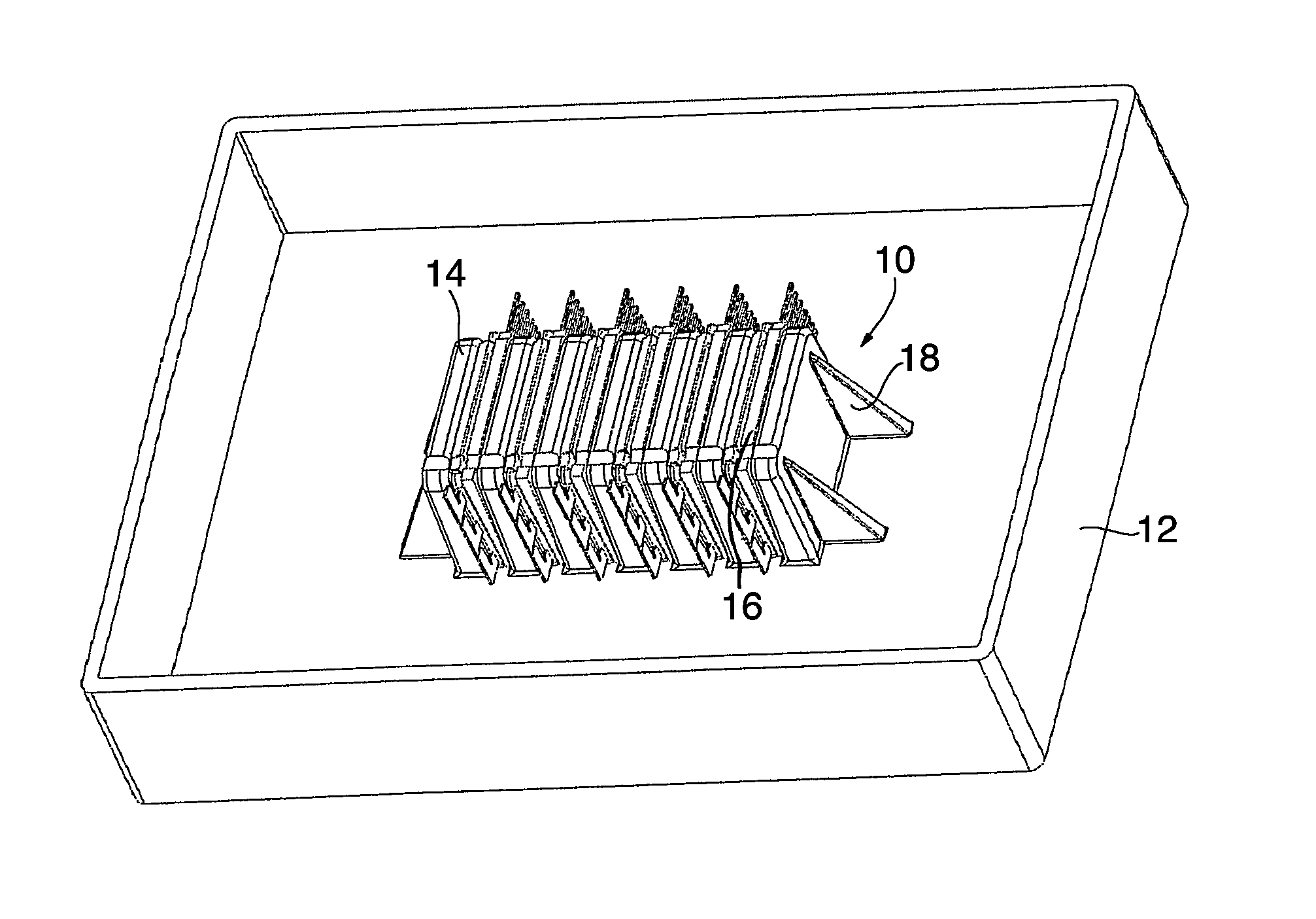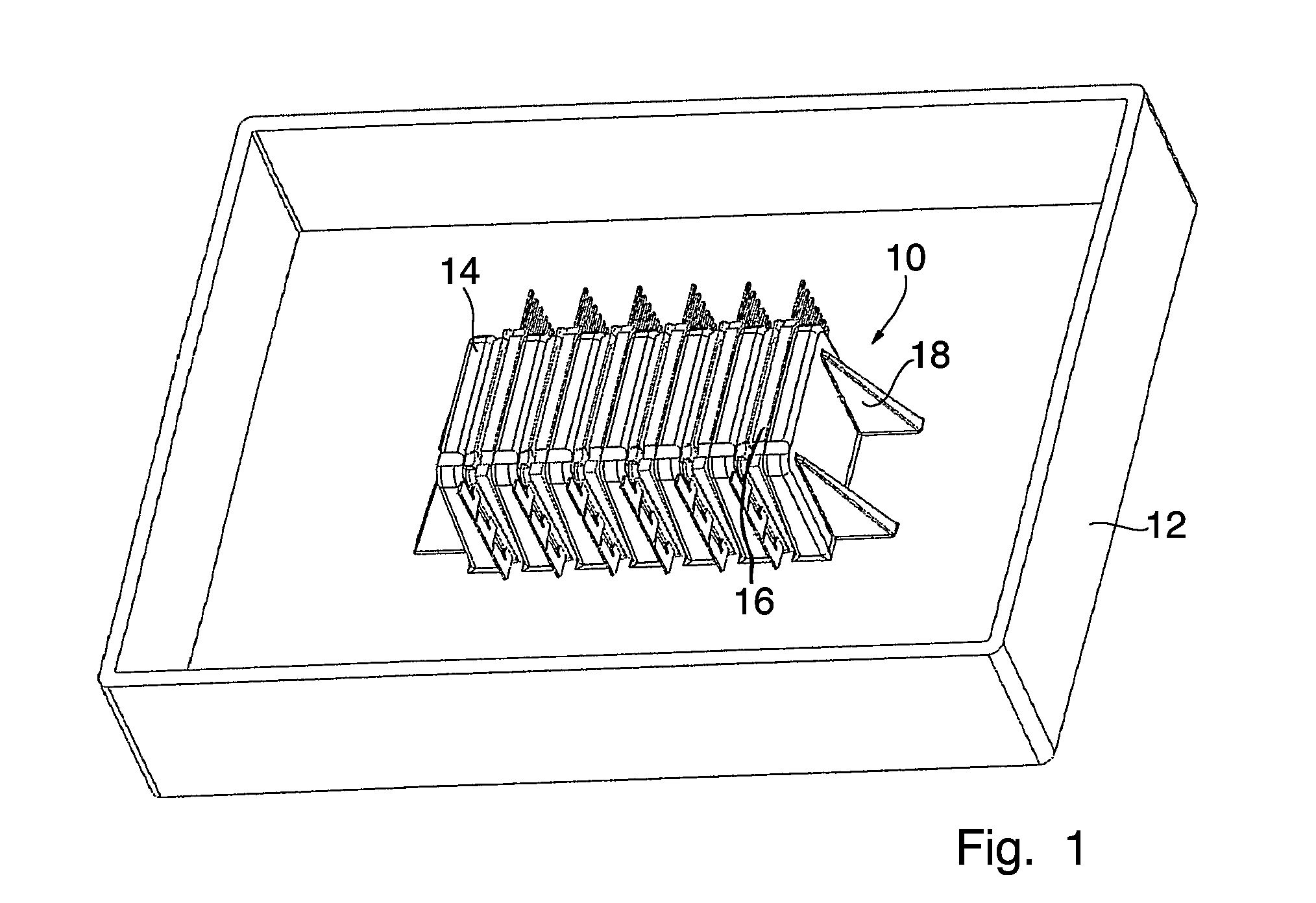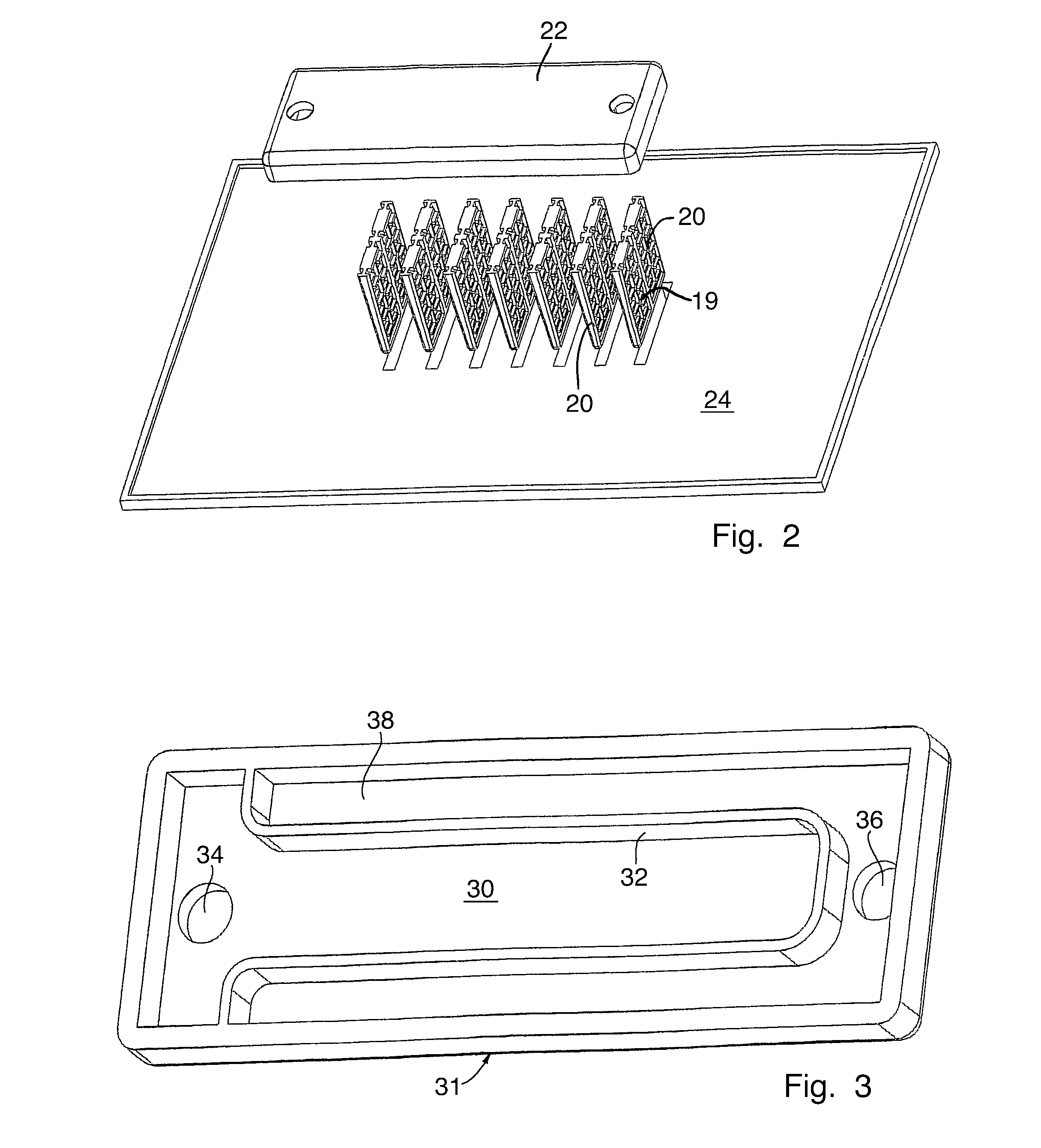Cooling device for a plurality of power modules
a power module and cooling device technology, applied in the direction of cooling/ventilation/heating modification, electrical apparatus, heat exchange apparatus, etc., can solve the problems of complex assembly of individual modules, unfavorable cooling effect distribution over all modules, and high cost, and achieve uniform cooling performance, easy assembly, and the effect of avoiding leakag
- Summary
- Abstract
- Description
- Claims
- Application Information
AI Technical Summary
Benefits of technology
Problems solved by technology
Method used
Image
Examples
Embodiment Construction
[0025]The outer frame 12 visible around the cooling device 10 in FIG. 1 serves for the accommodation of further components.
[0026]The device, and in particular the individual cooling fins 14, which extend parallel to and are arranged adjacent to each power module 16, have approximately the same height as the power modules in order to contact all areas in which heat can occur.
[0027]For example, the drawing shows six power modules 16 surrounded by seven cooling fins 14, each outer cooling fin 14 also comprising a support edge 18. Aluminium is suggested as a material for the cooling body, but also other materials can be imagined.
[0028]Not visible in FIG. 1 are the features shown in FIG. 2, namely the plates 20 inserted into the individual cooling fins from below for forming coolant channels, and a cover support 22 arranged above the fins and having screw bolt connections for fixing the wedges.
[0029]Clearly visible on a first housing shell 24 of the body 15, through which the coolant flo...
PUM
 Login to View More
Login to View More Abstract
Description
Claims
Application Information
 Login to View More
Login to View More - R&D
- Intellectual Property
- Life Sciences
- Materials
- Tech Scout
- Unparalleled Data Quality
- Higher Quality Content
- 60% Fewer Hallucinations
Browse by: Latest US Patents, China's latest patents, Technical Efficacy Thesaurus, Application Domain, Technology Topic, Popular Technical Reports.
© 2025 PatSnap. All rights reserved.Legal|Privacy policy|Modern Slavery Act Transparency Statement|Sitemap|About US| Contact US: help@patsnap.com



